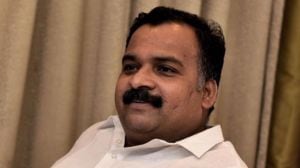Finally, Tehri reservoir is full
Power generation has also picked up with generation touching 770 MW

While Uttarakhand has been reeling under incessant rains during the past month, history has also been in the making. For the first time, the Tehri Dam reservoir has taken its complete shape, spreading over an area of 40 sq km in the Garhwal Himalayas.
Tehri-Hydroelectric Development Corporation THDC officials, who had been waiting for the past two years for the rains to fill the reservoir, are contended. This week, the water level in the reservoir stood at 795 metres, just five metres below the target for this year.
Power generation has also picked up with generation touching 770 MW. Since the project started producing power after Union Power Minister Sushilkumar Shinde inaugurated it in July 2006, there has been acute shortage of water in the reservoir, limiting the generation of power.
Even after the first monsoon rains in 2006, the reservoir could not be filled. The demand for water from Uttar Pradesh and Delhi also added to the woes of the dam officials. 8220;This year8217;s rains have made up the deficiency and the water level in the reservoir is near the target,8221; S R Mishra, Assistant General Manager of the project8217;s power house told The Indian Express. The reservoir has a capacity of 830 metre, but this year the target was fixed at 800 metres.
THDC officials said the reservoir has been helpful in limiting the damage due to floods in Uttar Pradesh and Bihar. The inflow of water into the reservoir has been 360 cumecs, while only 95 cumecs of water is being released. 8220;We hope to achieve the maximum generation of 1,000 MW with the filling of the reservoir,8221; Misra hoped. Tehri Project has four units of 250-MW each.
On the flip side, the near-full reservoir has brought misery to the two lakh people living in and around it. More than a dozen jhula bridges, three concrete bridges and several roads have completely submerged, cutting off large parts of Partapnagar and Ghansali blocks from the rest of Tehri.
People living in the villages, who have been cut off, now have to travel another 20 to 50 km to reach the district headquarters. 8220;Residents of these areas, particularly those in need of medical help and students, are the worst-hit,8221; Rajiv Nayan Bahuguna, a local journalist said.
- 01
- 02
- 03
- 04
- 05































